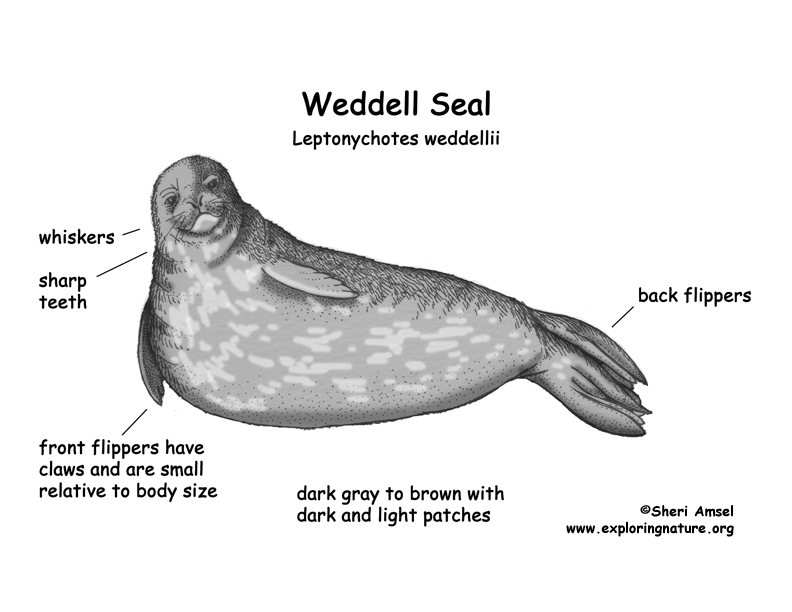

They are found in the ocean around the Antarctic and nearby islands. They don’t migrate. They live the furthest south of any seal or sea lion.
They live on the ice around Antarctica and the nearby islands. They stay where there are natural ice cracks where they can chew breathing holes, using their sharp canine teeth.
They have a large body and a small head. They are dark grayish- brown with spots. Their front flippers are small for their body size. They can reach 9.5 feet long and weigh up to 1,300 pounds.
They do most everything underwater, from eating to mating. They can dive to more than 1,500 feet.
They eat fish, squid and krill.
They are hunted by killer whales and leopard seals.
Females are pregnant for more than 1.5 months before they start to develop. This is called delayed implantation. Once it begins to grow, it is another 10 months before it is born (gestation). They have their baby (pup) on the ice.
They can live up to 30 years. They are listed as Lower Risk - least concern.
Kingdom: Animalia
Phylum: Chordata
Subphylum: Vertebrata
Class: Mammalia
Order: Carnivora
Suborder: Caniformia
Family: Phocidae
Genus: Leptonychotes
Species: Leptonychotes weddellii
When you research information you must cite the reference. Citing for websites is different from citing from books, magazines and periodicals. The style of citing shown here is from the MLA Style Citations (Modern Language Association).
When citing a WEBSITE the general format is as follows.
Author Last Name, First Name(s). "Title: Subtitle of Part of Web Page, if appropriate." Title: Subtitle: Section of Page if appropriate. Sponsoring/Publishing Agency, If Given. Additional significant descriptive information. Date of Electronic Publication or other Date, such as Last Updated. Day Month Year of access < URL >.
Amsel, Sheri. "Seal (Weddell)" Exploring Nature Educational Resource ©2005-2024. December 13, 2024
< http://www.exploringnature.org/db/view/Seal-Weddell >

